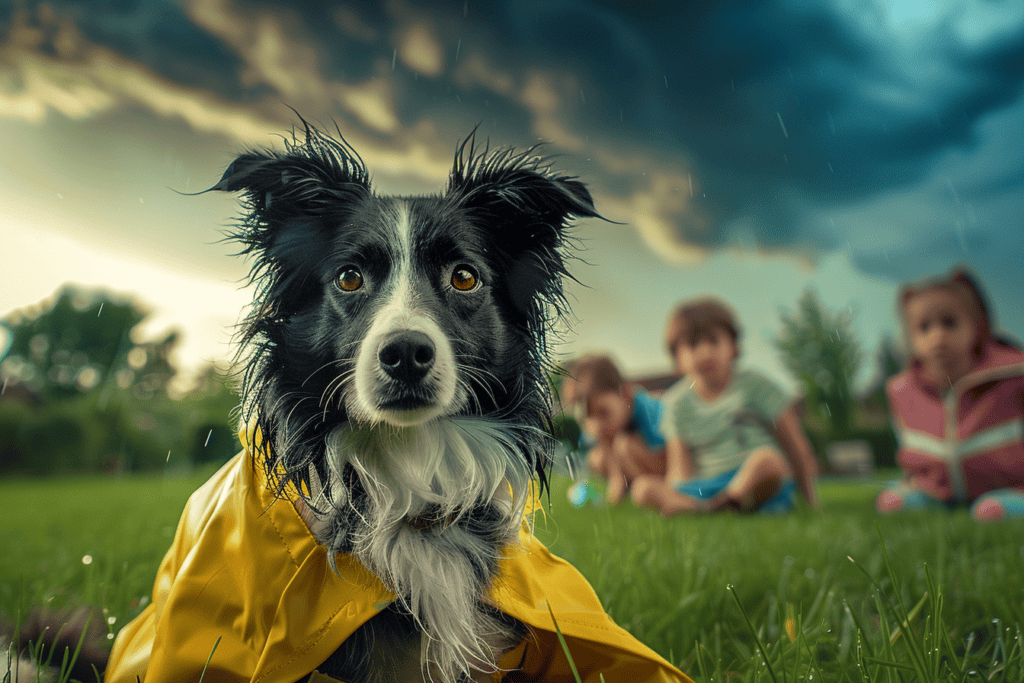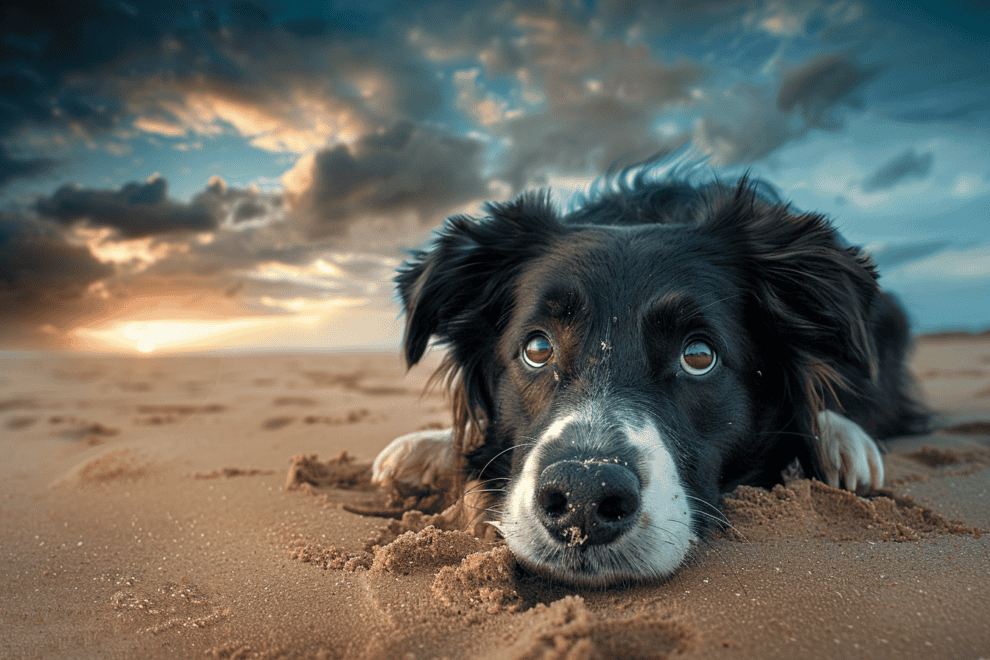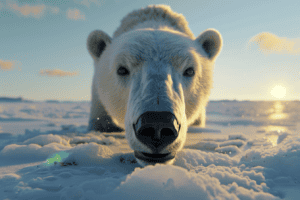Did you know that Border Collies, among all dog breeds, excel at predicting weather changes?
These incredible creatures have an innate ability to sense atmospheric shifts, making them natural weather forecasters.
If you’ve ever noticed your Border Collie becoming restless or seeking shelter before a storm, it’s because they can detect changes in barometric pressure and other environmental cues long before we can.
This exceptional sensitivity makes Border Collies the best at this unique and fascinating skill.

All dogs can sense storms in different ways, from changes in the barometric pressure to the smell of ozone in the air.
They may also pick up on subtle changes in the wind direction or the sound of distant thunder.
In fact, some dogs are so sensitive to these changes that they can predict a storm long before humans are aware of any impending weather.

The Science Behind Canine Storm Detection
Dogs are known for their incredible sense of smell, but did you know that they also have an uncanny ability to sense changes in barometric pressure?
Barometric pressure is the weight of the atmosphere pressing down on the earth’s surface, and it changes as weather systems move in and out of an area.
Dogs are able to detect these changes through their keen senses.
When barometric pressure drops, it often indicates the approach of a storm.
Dogs can sense these changes, which can cause them to become anxious or restless.
This is because the drop in pressure can cause discomfort in their ears, similar to the feeling you get when you’re on an airplane or driving up a mountain.
Canine Hearing and the Detection of Thunder
Dogs are also able to detect thunder through their acute sense of hearing.
Thunder is caused by the rapid expansion of air around a lightning bolt, which creates sound waves that travel through the air.
These sound waves have a range of frequencies, some of which are too high for humans to hear.
Dogs, on the other hand, are able to hear a much wider range of frequencies than humans.
This means that they can hear the high-pitched sound waves that are produced by thunder, even when it’s too far away for us to hear.
When a dog hears thunder, it can trigger their fight or flight response.
This is because the sound of thunder can be very loud and sudden, which can be frightening for dogs.
Some dogs may also associate the sound of thunder with other negative experiences, such as being left alone during a storm, which can make them even more anxious.
Behavioral Signs of a Dog Sensing a Storm

One of the most common physical reactions that dogs have to approaching storms is panting.
Dogs may start to pant heavily, even in cooler weather, as a result of the changes in barometric pressure that occur before a storm.
They may also tremble or shake, which can be a sign of anxiety or fear.
Some dogs may even become destructive, chewing on furniture or other objects in an attempt to relieve their anxiety.
In addition to physical reactions, dogs may also exhibit anxious behaviors before a storm.
They may whine or bark more frequently than usual, or they may become more clingy and seek out their owners for comfort.
Some dogs may pace or circle around the room, while others may hide under furniture or in a closet.
How Dogs Use Their Senses to Predict Weather
Dogs have a strong sense of smell, which is estimated to be between 10,000 to 100,000 times more sensitive than that of humans.
This means that they can detect scents that humans cannot, and this ability allows them to sense changes in the atmosphere that are associated with weather patterns.
One way that dogs use their sense of smell to predict the weather is by detecting changes in barometric pressure.
When a storm is approaching, the barometric pressure drops, and this change in pressure can cause physical discomfort for dogs.
This discomfort may manifest as restlessness, whining, or pacing.
Dogs can also detect changes in humidity and temperature, which are associated with weather patterns.
For example, when a storm is approaching, the humidity in the air increases, and dogs can detect this change in humidity through their sense of smell.
Understanding a Dog’s Sixth Sense
In addition to their sense of smell, dogs also have a sixth sense that allows them to sense changes in the environment.
This sixth sense is often referred to as a “gut feeling” or an “intuition,” and it is thought to be related to the dog’s ability to sense changes in electromagnetic fields.
When a storm is approaching, the electromagnetic field in the atmosphere changes, and dogs can sense this change through their sixth sense.
This may explain why some dogs become anxious or restless before a storm, even when there are no other obvious signs of a storm approaching.
Protecting Your Pet During Storms

Dogs have an incredible ability to sense changes in the weather, and this can cause them to become anxious and fearful during storms.
As a responsible pet owner, it is important to take steps to protect your furry friend during these times. Here are some strategies to help keep your dog safe and comfortable during storms.
Creating a Safe Space for Your Dog
One of the best things you can do for your dog during a storm is to create a safe space where they can feel secure.
This could be a crate, a designated room, or a cozy spot under a table.
Make sure this area is free of any potential hazards and is comfortable for your dog. Consider adding some blankets or toys to help them feel more at ease.
Training and Comforting Strategies
Training your dog to feel more comfortable during storms can also be helpful.
Start by desensitizing them to the sound of thunder by playing recordings of thunderstorms at a low volume while rewarding them with treats and praise. Gradually increase the volume over time.
You can also try distracting your dog with games or toys during storms to help them feel more relaxed.
If your dog experiences separation anxiety during storms, try to stay with them if possible.
Comfort them with gentle words and physical touch, but avoid coddling them excessively, as this can reinforce their fearful behavior.
If your dog’s anxiety is severe, it may be necessary to consult with a veterinarian.
They may recommend medication or other treatments to help your dog feel more comfortable during storms.
Frequently Asked Questions

What signs do dogs show when they detect an impending storm?
Dogs have an incredible ability to sense changes in the atmosphere, including storms.
They may become restless, anxious, or clingy, seeking comfort and reassurance from their owners.
Some dogs may also start to pant, drool, or pace around the house. If you notice your dog acting unusually, it could be a sign that a storm is on the way.
How do dogs react to changes in weather, like snowstorms or tornadoes?
Dogs react differently to different types of weather.
Some dogs may love playing in the snow, while others may prefer to stay indoors.
Similarly, some dogs may become anxious during thunderstorms, while others may not be bothered at all.
If you live in an area prone to tornadoes, your dog may start to act nervous or agitated before a storm hits.
Is there a scientific explanation for a dog’s ability to predict storms?
Scientists believe that dogs can sense changes in barometric pressure, which often precede storms.
They may also be able to pick up on changes in the air’s electrical charge, which can occur before lightning strikes.
Dogs’ keen sense of smell may also play a role in their ability to predict storms, as they can detect changes in the scent of the air.
What specific behaviors might a dog exhibit if a tornado is approaching?
If a tornado is approaching, your dog may start to act nervous or agitated.
They may bark, pace, or whine, and may seek out a safe place to hide.
Some dogs may even try to dig a hole or burrow under furniture to protect themselves from the storm.
In what ways can a dog’s senses pick up on the subtle clues of a storm’s arrival?
Dogs have incredibly sensitive hearing and can pick up on sounds that are beyond the range of human hearing.
They can also detect changes in the air’s pressure and electrical charge, which can indicate that a storm is on the way.
Additionally, dogs have a keen sense of smell and can detect changes in the scent of the air.
How might a dog’s perception of barometric pressure inform us about weather changes?
Changes in barometric pressure can indicate that a storm is on the way. Dogs can sense these changes.
They may become anxious or restless before a storm hits. By paying attention to your dog’s behavior, you may be able to predict when a storm is coming. Then, you can take steps to prepare for it.









